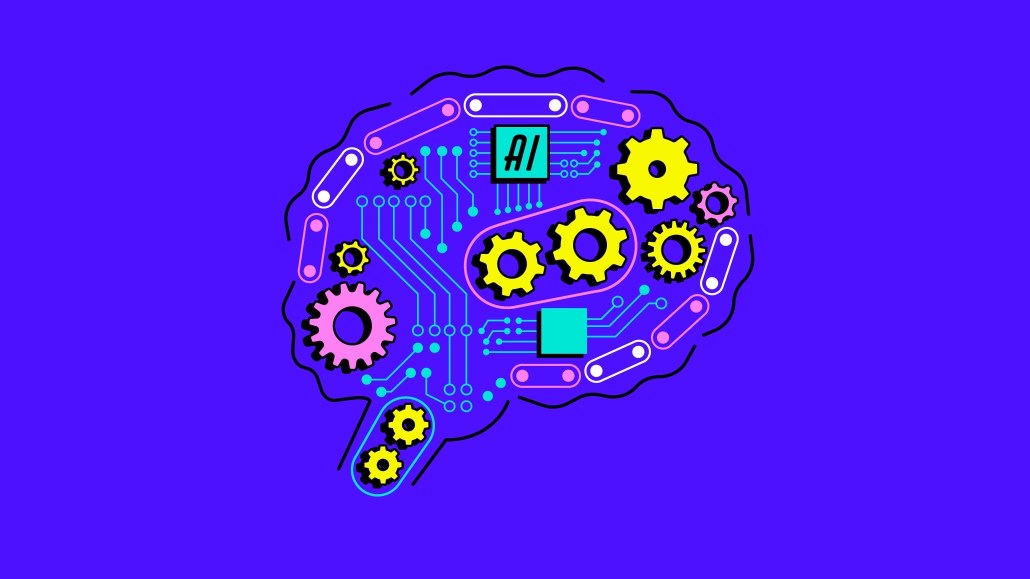Save 50% on a 3-month Digiday+ membership. Ends Dec 5.
Dentsu’s new Web3 readiness tool shines light on the tech’s potential to complement AI

Dentsu’s Innovation Initiative is launching a Web3 readiness index next month aimed at guiding clients on how to prepare their brands to use the technology as well as to drive adoption — at a time when the industry is obsessed with artificial intelligence.
Dentsu’s corporate venture and research and development practice built the readiness index in partnership with crypto trade publisher Decrypt in advance of ProcureCon at the end of June. Dentsu has continued to establish education and experiments in the metaverse and Web3 areas, including a partnership with Microsoft that involved building a dedicated metaverse campus and forming a Web3 Center of Excellence with Decrypt Media last year.
This new index tool is designed as a self-serve assessment that takes clients through a series of questions and then provides a score to reflect how they are doing with their Web3 efforts. Clients will be evaluated based on questions about areas such as customer engagement, competition, enterprise technology and compliance. The resulting report ultimately offers some guidelines and an index score on a scale of one to five, with five showing that the client is an established Web3 player.
“It’s a business development tool for us,” said Brian Monahan, head of Dentsu Innovation Initiative. “So it would stimulate a conversation with the client about their [enterprise wallet policy or digital assets].”
Monahan said eventually the assessment will include more benchmarks as more data is gathered. It’s part of the company’s ongoing efforts to figure out these programs for clients and establish the right tools and policies. So far, clients have been most interested in non-fungible tokens and loyalty programs using Web3, but Monahan mentioned that the “crypto winter” slowdown affected some consumer adoption in digital wallets and currencies.
But Web3 is not dead
With so much recent attention around generative AI tools, it’s easy to assume Web3 and metaverse efforts are fading. But in reality, some say AI and Web3 are not comparable — and may be complementary technologies in some cases.
Ad position: web_incontent_pos1
Samir Addamine, CEO of Absolute Labs, a Web3 marketing and engagement platform, pointed to Web3 business actually growing for his sector recently. Addamine said the company has talked to “upwards of 100 leading brands in the past three months,” indicating to him that there’s still a lot of Web3 marketing interest.
“Marketers know they have to be where their prospects and customers want them to be,” Addamine said. “What might have changed somewhat is that they’re looking before they leap — evaluating what the data is telling them in terms of where their best opportunities lie. To us, that’s a good thing.”
It remains easy to conflate the developments in AI and Web3 — they both have new applications, and it can be confusing as to how to approach disruptive tech. But as Addamine explained, “They are not mutually exclusive — AI is a capability and Web3 is an ecosystem. They’re looking to AI to see what they can do that they’re already doing, better. They’re approaching Web3 as an entirely new area of growth and opportunity, and looking to companies like ours to see how they can get there faster, with a solid business case and minimal friction.”
Is the way forward for Web3 in partnership with AI?
Anthony Yell, chief creative officer of Razorfish, agreed that AI and Web3 could enhance each other in the long run. Despite the focus on AI right now, Yell said clients “aren’t forgetting Web3.” Plus, AI is not new — some automated and machine learning tools have already been integrated at agencies.
Ad position: web_incontent_pos2
“There are a lot of tangible tools in-market with clear benefits,” Yell said. “While efforts once centered around getting to market quickly, we’ve cycled to developing a deeper and broader analysis of the long-term possibilities and impact on the overall integrated brand experience.”
Monahan said he is also hearing from clients who want the two technologies to come together, but it remains to be seen how AI and Web3 programs could combine. He said he sees AI being useful in workflow automation, or generative AI used for customer experience and chatbots, while Web3 allows brands to engage users in virtual words and explore loyalty programs in new ways.
“Could Web3 and AI just be the same thing, so we could just have one group of people trying to sort it out?” asked Monahan. “I do think there’s some overlap. But for now, where we see a lot of energy in the Web3 space, it’s around virtual events, presence in virtual worlds, commemorative NFT drops and tokenized loyalty programs.”
More in Media

Digiday+ Research Subscription Index 2025: Subscription strategies from Bloomberg, The New York Times, Vox and others
Digiday’s third annual Subscription Index examines and measures publishers’ subscription strategies to identify common approaches and key tactics among Bloomberg, The New York Times, Vox and others.

From lawsuits to lobbying: How publishers are fighting AI
We may be closing out 2025, but publishers aren’t retreating from the battle of AI search — some are escalating it, and they expect the fight to stretch deep into 2026.

Media Briefing: Publishers turn to vertical video to compete with creators and grow ad revenue in 2026
Publishers add vertical video feeds to their sites to boost engagement, attract video ad spend and compete with news creators.
Ad position: web_bfu



